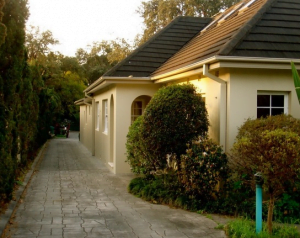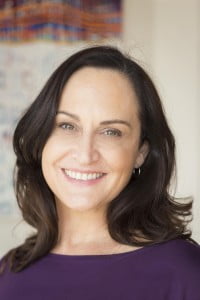What It Means to Be a Colour Consultant

What does a typical day look like for you?
After an early morning gym or yoga session, my day usually starts with a hit of caffeine in the form of a soy cappuccino.
Over my coffee I quickly scan my emails for anything urgent and then I get moving on my list of daily priorities.
My typical day varies depending on clients and deadlines – I could have an external meeting with a painter, a supplier or a client. Alternatively, I could be spending time at my desk researching and sourcing various colour samples or writing about colour for websites such as Houzz Australia. I sometimes get asked to present on the science of colour and how to use it for specific built environments such as hospitals or 24hr control rooms so my time may even be spent developing a presentation or workshop.
I usually like to wrap up my workday at around 6pm. My typical day is always different – no chance of Groundhog Day in this profession!
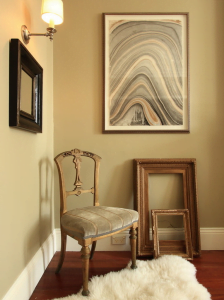
Colour specifications by Jacquelene and design by AnyH Interiors
You work a lot with commercial clients. Could you fill us in on the process when working in a commercial environment?
The first thing I do is meet with my client to scope the requirements and understand who else is involved in the project. I then develop a job estimate for approval.
On approval I arrange meetings with specific user groups and others involved in the project to commence gathering more detail around the space, its function, the occupants, the layout and other relevant requirements that will affect the colour strategy.
I then start drafting the colour palette and sourcing material samples. This requires some to-ing and fro-ing whether it’s visiting a supplier, other team members or site inspections armed with samples to check the colour under the lighting, within the space or alongside already chosen fixtures and fittings.
Once I’ve firmed up the colour strategy I usually write an in depth report outlining the colours chosen and the reasons why, including specification sheets and samples. Depending on the size and the detail of the project the report may be anything from two to twenty pages long.
What are your top 3 tips when working with colour?
I’ve adapted this from a past career in marketing and advertising and apply what I call the 3W’s of Colour Design to my work. That is, get to know:
- WHO will be using the space? Everything from their likes and dislikes to their age, gender, health, lifestyle and anything else that will help you identify their needs in developing a colour palette.
- WHAT is the function of the space and the tasks to be carried out in it? Is it residential, commercial or institutional?
- WHERE is the colour being used? Including whether it’s an exterior, interior, the surface area where it will be applied and the actual location of the building.

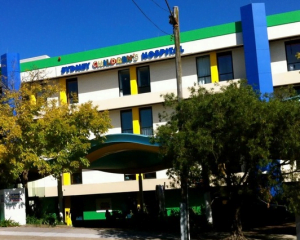
A project Jacquelene worked on for the Sydney Children’s Hospital
One of your recent blogs discusses the difference between a qualified colour consultant and paint consultant. Can you outline the importance of a colour consultant when working in a space?
Colour is one of the greatest stimuli we receive from the exterior world. Research has proven that people receive 80% of their information from the environment with the sense of sight (visual stimulation) giving ten times more information than all other senses – this includes colour and light.
A qualified Colour Consultant or Colour Designer specialises in the use of colour from both an aesthetic and functional perspective. They possess various levels of training around our response to colour and how to use it from basic colour psychology through to more advanced levels such as visual ergonomics and the true physiological and psychological response to colour and light.
Colour Consultants work with both exteriors and interiors. An exterior may include paint, paving, cladding or any other material around the exterior of a building whilst interior may include paint, fixed surfaces such as floors, countertops, cabinetry, carpets, splashbacks and basic soft furnishings such as cushions, curtains and drapery.
A qualified Colour Consultant may also extend their service to advising on colours of your brand or product to fit in with your business proposition.
What made you decide to begin a career in colour?
Whilst working in advertising many years ago I decided I wanted to do something more creative so I commenced studying Colour and Design at ISCD. On completion of my Certificate, my educator recommended I specialise in colour consulting as my work showed a good eye for colour. I’ve been studying different applications of colour ever since.
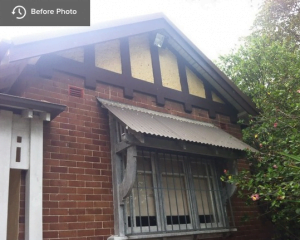
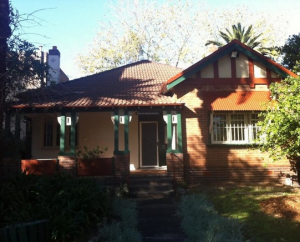
Before and after of a project Jacquelene worked on for a Daycare facility for early onset dementia
Why did you choose ISCD?
ISCD fitted in with my lifestyle, location and it had an excellent reputation.
What’s the best lesson you learnt whilst studying Colour Design at ISCD?
Always ensure that the client uses the specified brand and colour you’ve recommended and doesn’t try to colour match. It really is a recipe for disaster, particularly when paint is involved.
What colours combinations/palettes do you see having an impact in 2016?
Late last year I wrote an editorial for Houzz Australia on how to use Serenity and Rose Quartz (Pantone’s Colour of 2016) that is starting to feature in some 2016 colour palettes such as the Dulux 2016 BIOFRAGILITY palette.
Now, with the release of Pantone’s Fall 2016 Palette, I feel that shades of BLUE will find their way into 2016 in various forms. It’s been about 30 years since we’ve had shades of blue feature prominently so I’m really looking forward to seeing how some designers are going to execute the shade to give it a modern and contemporary feel.
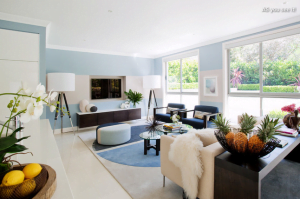
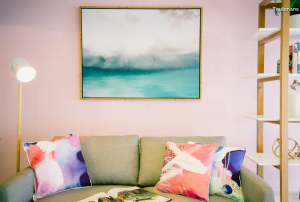
Images from Jacquelene’s editorial in Houzz about the Pantone 2016 Colours
Can you tell us a bit about what The Colour Agency does?
I established The Colour Agency in 2011 following training with Frank H Mahnke and the International Association of Colour Consultants in North America.
The goal is to use colour in the most effective way to create more user-supportive environments using both the objective and subjective experiences of colour. This can be by providing an extra dimension and point of difference to architects, key decision makers or working directly with clients.
Depending on the brief, The Colour Agency works with recommending colours of paint and material finishes such as bricks, pavers, roofing, windows, flooring, fencing, paving, guttering, tiles, carpet, laminate, benchtops, splashbacks and anywhere else colour advice is needed.
What are your dreams/plans for the future?
My training in the U.S. gave me the impetus to go back to Uni to study a Graduate Diploma in Psychology. When I finish, I plan on doing further research from a psychological standpoint on how we can further use colour to create beneficial and healthy surroundings for people in the places they live, work, and heal from illness.
My dream is to create greater awareness around the true power of colour and share with others how they can use it to create balance and harmony in their lives.
Any tips for people looking to study design and get into the colour industry?
Start from the beginning – attend an introductory night, a short workshop or start with a Certificate IV in Interior Decoration. The ISCD courses are a great starting point as their training is second to none and their industry contacts are fantastic.
Favourite colour?
Blue.
What are your current obsessions?
- My Cat – he has more Instagram followers than I do!
- My nieces – who live in the U.S.A
- Aura Soma Colour Care – after being mesmerised by it ten years ago, I went on to become a registered practitioner. I am still obsessed by the little coloured bottles.
Top three blogs?
houzz.com.au (if you can call it a blog)
Describe your style in three words?
Eclectic, Modern, Adaptable
